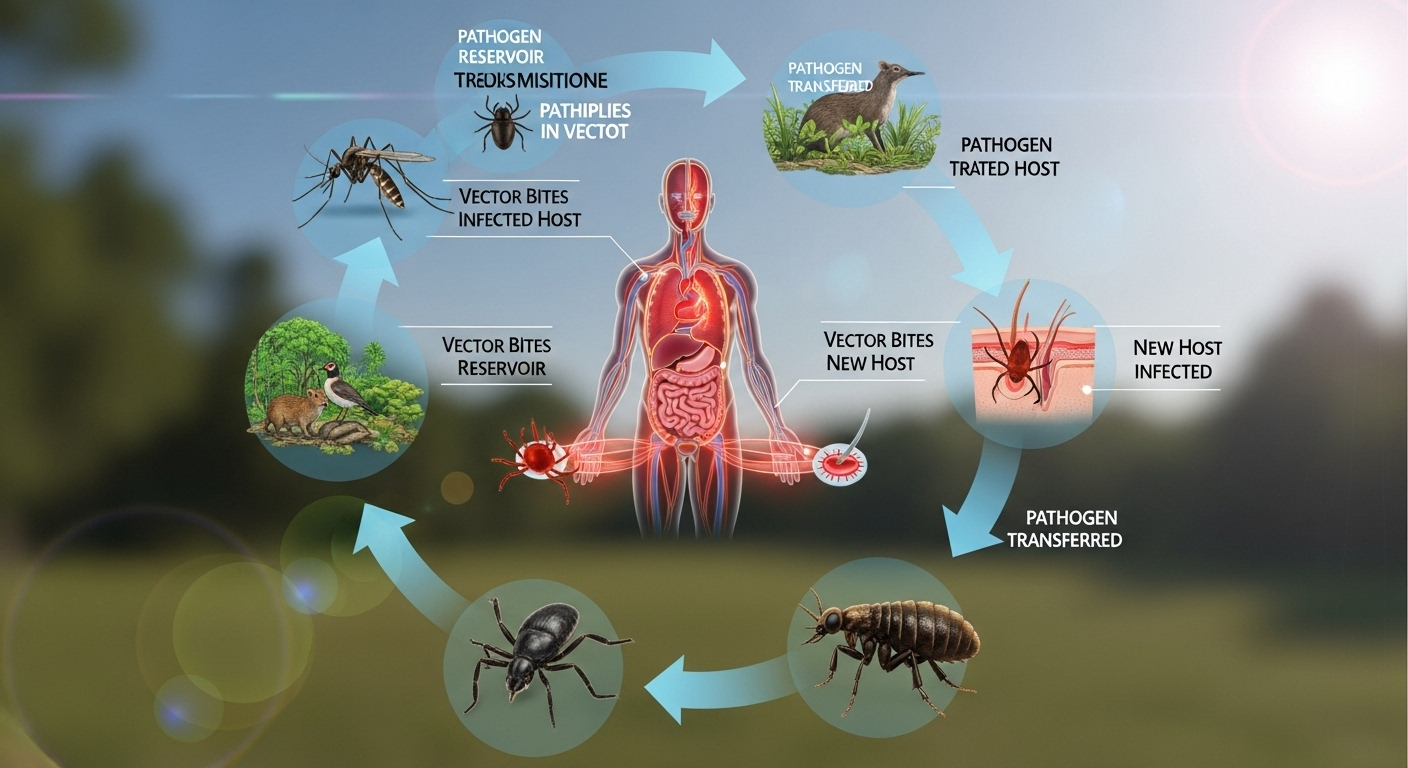Vector-borne diseases, a group of illnesses transmitted by arthropods like mosquitoes and ticks, represent one of the most significant threats to global public health. From the debilitating fevers of Dengue to the chronic impact of Lyme disease, these conditions affect hundreds of millions of people annually, causing immense suffering and economic strain. The question of how are vector-borne diseases transmitted is not just a matter of scientific curiosity; it is the fundamental key to understanding, preventing, and controlling these pervasive threats. The answer lies in a complex interplay between a pathogen, a transmitting organism (the vector), and a host. This transmission is not a simple transfer but an intricate biological process that has been refined over millennia, making these vectors some of the most efficient disease spreaders in the natural world. What Are Vector-Borne Diseases? A Fundamental Overview At its core, a vector-borne disease is an illness caused by a pathogen—such as a virus, bacterium, or parasite—that is transmitted from an infected host to a new host through the action of a vector. A vector is a living organism, typically an arthropod, that carries and transmits an infectious agent. It acts as a biological bridge, allowing the pathogen to bypass the body's external defenses and establish an infection. These vectors do not usually cause the disease themselves but are essential for the pathogen's life cycle and its journey from one individual to another. The global burden of these diseases is staggering. According to the World Health Organization (WHO), vector-borne diseases account for more than 17% of all infectious diseases, causing over 700,000 deaths annually. They thrive in tropical and subtropical areas and are disproportionately prevalent in communities with limited access to safe drinking water and sanitation. However, with factors like global travel and climate change, the geographic range of these vectors—and the diseases they carry—is expanding, posing a new and present danger to regions previously considered safe. Understanding this transmission chain is paramount for public health. The chain consists of three main components: the pathogen (the microscopic disease-causing agent), the vector (the transporter), and the host (the organism, often human or animal, that gets infected). Interrupting any single link in this chain can prevent an outbreak. For instance, controlling the vector population, developing vaccines to protect the host, or creating drugs to eliminate the pathogen are all strategies derived directly from our understanding of the transmission process. This is why a deep dive into the mechanics of transmission is not just academic but profoundly practical. The Core Mechanisms of Transmission The transmission of a pathogen by a vector is not a monolithic process. It primarily occurs through two distinct mechanisms, differentiated by what happens to the pathogen inside the vector. While both result in a new infection, the biological processes involved are vastly different. One is a passive, physical transfer, while the other involves a complex, active developmental stage for the pathogen within the vector's body. These differences have significant implications for the types of diseases spread and the methods used for their control. Biological Transmission Biological transmission is the most common and complex method for vector-borne diseases. In this process, the pathogen is not just passively carried; it must undergo a period of replication, development, or both inside the vector before it can be transmitted to a new host. The vector is an essential part of the pathogen's life cycle. Without this internal development phase, the pathogen cannot become infectious to the next host. This period is known as the extrinsic incubation period. During biological transmission, the vector—let's say a mosquito—ingests the pathogen (e.g., the Malaria parasite, Plasmodium) when it takes a blood meal from an infected host. The parasites then travel to the mosquito's gut, where they multiply and develop. After this incubation period, the mature, infectious parasites migrate to the mosquito's salivary glands. When the mosquito bites another person, it injects its saliva—along with the now-infectious parasites—into the new host's bloodstream, initiating a new infection. This makes the vector a true biological host, not just a simple courier. Examples of diseases spread via biological transmission include Malaria, Dengue fever, Zika virus, and Lyme disease. Mechanical Transmission In contrast to the complexity of biological transmission, mechanical transmission is a much simpler, physical process. In this mode, the vector acts like a contaminated syringe or a dirty object, physically carrying the pathogen from one place to another without the pathogen undergoing any development or multiplication. The pathogen is typically carried on the vector's body parts, such as its feet, mouthparts, or wings. A classic example is a housefly landing on contaminated feces containing bacteria like Shigella or Salmonella. The bacteria adhere to the fly's legs and body. The fly then lands on uncovered food, depositing the bacteria onto the surface. A person who consumes this food can then become ill. The fly itself is not infected and is not a necessary part of the pathogen's life cycle. The time between contamination of the vector and transmission to the host is typically short, as the pathogen's survival on the vector's exterior is limited. While less common for major systemic diseases like Malaria, mechanical transmission is a significant factor in the spread of foodborne and waterborne illnesses like trachoma and cholera. Key Players: The Most Common Vectors and the Diseases They Carry The world of vectors is diverse, but a few key players are responsible for the vast majority of human disease transmission. These arthropods have co-evolved with their pathogens and hosts, becoming incredibly efficient at spreading illness. Understanding these vectors, their habits, and the diseases they transmit is crucial for targeted prevention efforts. Mosquitoes: The Deadliest Vectors Mosquitoes are, without a doubt, the most significant vectors of disease globally. Their ability to adapt, their sheer numbers, and their need for blood meals from a variety of hosts make them unparalleled spreaders of pathogens. Different species of mosquitoes are responsible for different diseases, and their habitats and biting behaviors vary. The Anopheles mosquito is infamous as the primary vector for




